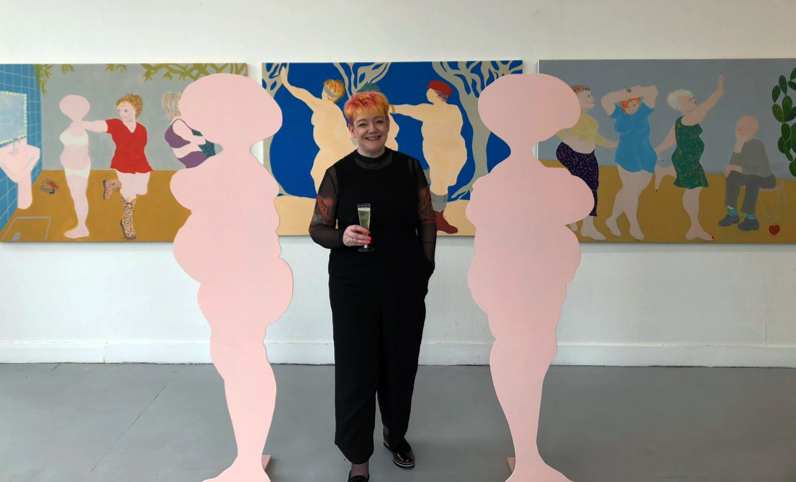When I go to art galleries and museums, I am very conscious of the type of women that are represented in the artworks. They are mainly by the male gaze for the male gaze. I want to make work about the female form that reflects real women and rejects the female stereotypes that are frequently depicted in modern society.
Glasgow-based visual-artist Siusan Patterson talks to Sonalee Tomar about why she chooses to create imaginative figments of figurative, playful, and often exaggerated forms of female bodies.

Take us to the beginning of your story.
I was a teenager when punk was fading out and New Wave and other music genres were emerging. It was a very exciting time for music and fashion and I loved album artworks of the music at the time. I was interested in graphic design and applied to go to Belfast Art College where I lived in Northern Ireland. However, before the interview, my portfolio got destroyed in an accident and I wasn’t able to go. I was truly devastated and got a job to help me get money to build up a new folio. It was a job in an accounts office and I ended up becoming an accountant.
However the urge to be an artist remained with me and in 2015, I applied to Glasgow School of Art to do an Honours degree in Painting & Printmaking and I graduated from there in 2019.

What inspires you? Tell us about your frameworks and process.
When I go to art galleries and museums, I am very conscious of the type of women that are represented in the artworks. They are mainly by the male gaze for the male gaze. I want to make work about the female form that reflects real women and rejects the female stereotypes that are frequently depicted in modern Western society. I am particularly interested in Greek mythology and often draw inspiration from the females that appear in the stories.

What is the primary role of an artist?
I don’t think there is a primary role of an artist. Artists make work for a variety of reasons. I think successful artwork should make the viewer ponder, to stop and think and invoke a reaction or feeling. I don’t want my work to make a big political point, but to make the viewer consider that there is a different viewpoint, and I want to do that in a subtle way.

How do you deal with the conceptual difficulty and uncertainty of creating work?
I try not to worry too much about conceptuality. My early work was more conceptual, but then I became a lot more interested in challenging the stereotypical female body form. This led me to creating figmented, exaggerated female bodies. I am conscious that my work has a feminist trope and that this limits my audience to a certain degree. But I think it’s important to not be influenced by that to make the sort of work that I want to make.

What are you looking for when you view art? Who are your maestros?
I am attracted to work about identity and any work that has a feminist trope. There seems to be a strong movement in the art world now that reflects this. I am particularly interested in the work of contemporary artists such as Tschabalala Self and Ella Kruglyanskaya. Their work attempts to change the conversation about female body image and identity. I am also interested in the representation of women by Peter Paul Rubens. Although painted for the male gaze, his depictions of women have a richness and fullness of figure.

You have spent time amongst artists in flow, what have you observed?
I have come to appreciate that there is a vibrant and rich art scene outside the major cities of London, New York and Paris. It is very grassroots orientated and thrives amongst emerging and mid-career artists. In Glasgow, where I am based, this is very apparent by the growing number of artist-led arts organisations that are thriving and providing a platform for a vast array of artistic talent.

What are you working on now?
I am working on a body of work that will include painting, sculpture and also a short film. I am interested in printing on to material and incorporating that into the paintings and sculptures. I am intrigued by the way drag artists portray bold and brash exaggerated female forms and the impact this has on the male perception of the female body image. The work will investigate this and reflect on the notion of performativity.













Add Comment